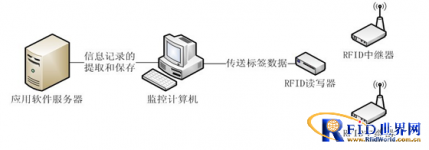
Ship identification based on 433MHz RFID
[ad_1]
Program overview
With the development of my country’s shipping industry and fishery production, shipping and fishery production vessels and employees have increased dramatically. Ship information collection is a core issue in ship management. Due to the lack of appropriate sensing technology, ship monitoring has so far remained at the level of manual observation operations, becoming an “information island” in port and bank management. This traditional method is not only difficult to ensure the effectiveness of on-site observations in management, but also directly affects the quality of observation data. It is also difficult to preserve and organize the first-hand data of manual observations, and the value of information reuse is not high, which weakens the information. Management support for decision-making. The emergence of RFID technology has solved this problem. This technology is used in ship management in designated areas, and can have functions such as ship identity identification, ship basic information, certificate information, security inspection and other on-site supervision information, entry and exit information storage, and visa management. 433MHz activeRFIDBecause of its unique characteristics of long transmission distance, strong diffraction, strong penetration and adaptability to harsh outdoor environments, it is widely used in ship management in areas such as sheltered harbors and inland waterways.
Scheme principle
The system consists of “application software server”, “monitoring computer”, “RFID repeater”, “RFIDReader“And “RFID electronic tags”.
The main idea is to stick the “RFID electronic tag” in the cockpit of the ship to realize one card per ship. Install an “RFID repeater” on the poles inside and outside the ship’s entry and exit area (one or two poles are equipped with cameras to take pictures of passing ships), and install RFID readers in the guard booth or duty room. Writer” and connected to the monitoring computer.
When a ship with an “RFID electronic tag” enters and leaves the port, the “RFID repeater” obtains the signal of the “RFID electronic tag” and forwards the signal to the “RFID reader”, and the “RFID reader” outputs the video switch at the same time Signal, start the camera to take photos and transfer the photos to the background for storage. According to the “RFID electronic tag” information fed back by the “RFID reader” and the sequence of passing through the internal and external repeaters, the monitoring computer can learn the current state of the passing ships (inbound or outbound), and combine this information with the application The server data is matched, and the ship information is obtained.
In addition, using handhelds or smart phones (mobile phones need to be used in conjunction with portable Bluetooth readers), staff can also take inventory and identity verification of ships entering the relevant area, which is not only conducive to inventory confirmation of ships entering the haven , And this method is also convenient for daily inspection and management of ships in the sea.
Schematic diagram of the overall structure:

Schematic diagram of ships entering and exiting:

[ad_2]


